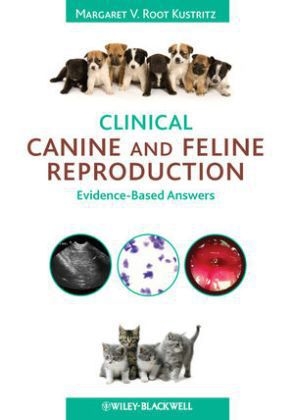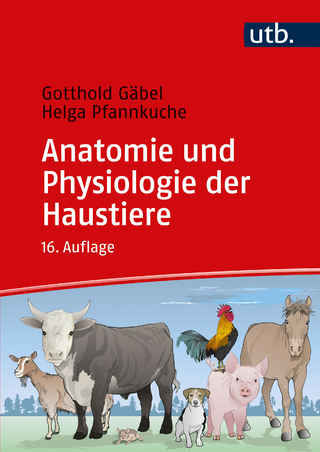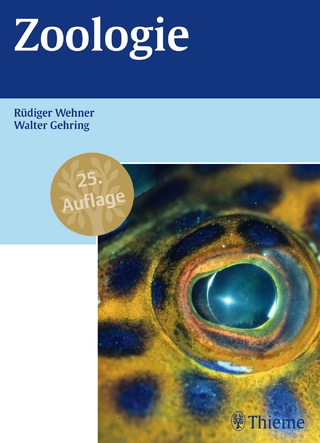
Clinical Canine and Feline Reproduction
Iowa State University Press (Verlag)
978-0-8138-1584-8 (ISBN)
- Titel ist leider vergriffen;
keine Neuauflage - Artikel merken
Margaret V. Root Kustritz , DVM, PhD, DACT is a former general practitioner who is currently an Associate Professor of Small Animal Reproduction and serves as Vice-Chair of Veterinary Clinical Sciences and as the Assistant Dean of Education at the University of Minnesota College of Veterinary Medicine.
Preface, xiii Acknowledgments, xv Section I Canine techniques, 3 1. What is the technique for collection of a vaginal cytology specimen?, 5 2. How do I interpret vaginal cytology?, 7 3. What equipment do I need to perform vaginoscopy and how do I interpret what I see?, 13 4. What is the technique for vaginography?, 19 5. What techniques are available for pregnancy diagnosis and when are they best used?, 21 6. What is the technique for semen collection from male dogs?, 25 7. What is the technique for semen evaluation in dogs?, 29 8. What is the technique for testicular ultrasound and how do I interpret what I see?, 35 9. What is the technique for prostatic fi ne-needle aspirate or biopsy?, 37 10. What is the technique for testicular fi ne-needle aspirate and how do I interpret what I see?, 39 11. What is the technique for testicular biopsy?, 41 12. What is the technique for preparation of chilled semen in dogs?, 43 13. What is the technique for preparation of frozen semen in dogs?, 47 14. What is the technique for vaginal insemination?, 51 15. What is the technique for transcervical insemination?, 55 16. What is the technique for surgical insemination?, 57 17. What is the technique for anesthesia for Cesarean section?, 59 18. What is the technique for Cesarean section?, 63 Section II Canine reproductive physiology, 67 19. What is the normal age for puberty onset in bitches and dogs?, 69 20. What are the normal parameters for the estrous (heat) cycle in bitches?, 71 21. What are the normal parameters for semen quality in dogs?, 75 Section III Canine reproductive management, 79 22. What age is best for ovariohysterectomy of female dogs?, 81 23. When is it best to perform ovariohysterectomy of female dogs relative to heat?, 83 24. What age is best for castration of male dogs?, 85 25. Are nonsurgical alternatives available for sterilization or contraception of female or male dogs?, 87 26. What comprises recommended pre-breeding evaluation for bitches?, 91 27. What effect does hypothyroidism have on fertility?, 93 28. What are the pros and cons of treatment with antibiotics during heat in bitches?, 95 29. How do I use progesterone and other measures for breeding management?, 97 30. What drugs are unsafe to use during pregnancy in bitches?, 101 31. Are there dietary supplements proven to improve fertility in bitches?, 105 32. How can we prevent dystocia?, 107 33. What are the normal physiologic and physical changes in bitches pre-partum?, 109 34. How can I terminate pregnancy in bitches?, 111 35. Should bitches be spayed at the time of removal of a mammary mass?, 115 36. Are there dietary supplements proven to improve semen quality in male dogs?, 117 37. Can I locate retained testes without surgery?, 119 38. Is there a medical therapy to cause testes to descend into the scrotum after 8 weeks of age?, 121 Section IV Canine disease, 123 39. How do I diagnose and treat dystocia?, 125 40. How do I diagnose and treat eclampsia (hypocalcemia)?, 129 41. What are the causes of prolonged vulvar discharge after whelping in bitches?, 131 42. What is the best treatment for puppy vaginitis? Should the dog be allowed to go through one heat cycle?, 133 43. What is the best treatment for chronic vaginitis in a spayed female dog?, 135 44. How do I test for and treat canine brucellosis?, 139 45. What are the causes of vulvar discharge during pregnancy?, 143 46. What diagnostic tests can be performed to identify the cause of pregnancy loss?, 145 47. How do I diagnose and treat pyometra in bitches?, 149 48. What are the causes of agalactia in bitches and how is it best treated?, 155 49. How do I treat mastitis in a nursing bitch?, 157 50. What are the causes of persistent estrus (heat) in dogs?, 161 51. What are the causes of lack of cycling (persistent anestrus) in dogs?, 165 52. What is the diagnostic approach for infertility of a bitch?, 169 53. How do I treat benign prostatic hypertrophy?, 173 54. How do I treat prostatitis?, 177 55. What is the best treatment for recurrent paraphimosis (extrusion of the penis from the prepuce) in neutered male dogs?, 179 56. What is the diagnostic approach for infertility of a male dog?, 181 Section V Feline techniques, 185 57. What is the technique for collection of a vaginal cytology specimen?, 187 58. How do I interpret vaginal cytology?, 189 59. What techniques are available for pregnancy diagnosis and when are they best used?, 191 60. What are the techniques for semen collection from male cats?, 193 61. What is the technique for semen evaluation in cats?, 195 62. What is the technique for vaginal insemination?, 199 63. What is the technique for surgical insemination?, 201 64. What is the technique for anesthesia for Cesarean section?, 203 65. What is the technique for Cesarean section?, 207 Section VI Feline reproductive physiology, 209 66. What is the normal age for puberty onset in queens and toms?, 211 67. What are the normal parameters for the estrous (heat) cycle in queens?, 213 68. What are the normal parameters for semen quality in cats?, 215 Section VII Feline reproductive management, 217 69. What age is best for ovariohysterectomy of female cats?, 219 70. When is it best to perform ovariohysterectomy of female cats relative to heat?, 221 71. What age is best for castration of male cats?, 223 72. Are nonsurgical alternatives available for sterilization or contraception of female or male cats?, 225 73. What comprises recommended pre-breeding evaluation for queens?, 227 74. How do I use progesterone and other measures for breeding management?, 229 75. What drugs are unsafe to use during pregnancy in queens?, 231 76. How can I terminate pregnancy in queens?, 233 77. Should queens be spayed at the time of removal of a mammary mass?, 235 Section VIII Feline disease, 237 78. How do I diagnose and treat dystocia?, 239 79. What diagnostic tests can be performed to identify the cause of pregnancy loss?, 243 80. How do I diagnose and treat pyometra in queens?, 245 81. How do I treat mastitis in a nursing queen?, 249 82. What are the causes of persistent estrus (heat) in cats?, 251 83. What are the causes of lack of cycling (persistent anestrus) in cats?, 253 84. What are the causes of estrus after ovariohysterectomy of female cats?, 255 85. What are the causes of persistent male behavior after castration of male cats?, 257 86. What is the diagnostic approach for infertility of a queen?, 259 87. What is the diagnostic approach for infertility of a male cat?, 261 Section IX Pediatric techniques, 263 88. What are some of the techniques for venipuncture?, 265 89. What are some of the techniques for collection of a urine sample?, 267 90. What is the technique for placement of an intraosseous catheter?, 269 91. How do I determine safety and effi cacy, and calculate correct dosage for drugs used in puppies and kittens?, 271 Section X Pediatric physical examination and management, 275 92. What are normal physical examination fi ndings at various ages in puppies and kittens?, 277 93. What are normal values on complete blood count, chemistry profi le, and urinalysis of puppies and kittens?, 281 94. How are orphan puppies and kittens best fed?, 285 95. What flea and tick control products are safe to use in puppies and kittens?, 289 Section XI Pediatric disease, 291 96. What are the causes of failure to thrive in puppies and kittens?, 293 97. What are the common causes of diarrhea in puppies and kittens?, 299 98. What are the clinical manifestations of septicemia and how is it diagnosed and treated?, 301 99. How is neonatal isoerythrolysis diagnosed, treated, and prevented in cats?, 303 100. What are the causes of stillbirths and neonatal mortality in kittens and puppies?, 305 Resources , 307 Index , 309
| Verlagsort | Arnes, AI |
|---|---|
| Sprache | englisch |
| Maße | 173 x 245 mm |
| Gewicht | 726 g |
| Einbandart | Paperback |
| Themenwelt | Naturwissenschaften ► Biologie ► Zoologie |
| Veterinärmedizin ► Allgemein ► Tierernährung / Tierhaltung / Tierzucht | |
| Veterinärmedizin ► Vorklinik | |
| Veterinärmedizin ► Kleintier | |
| ISBN-10 | 0-8138-1584-3 / 0813815843 |
| ISBN-13 | 978-0-8138-1584-8 / 9780813815848 |
| Zustand | Neuware |
| Informationen gemäß Produktsicherheitsverordnung (GPSR) | |
| Haben Sie eine Frage zum Produkt? |
aus dem Bereich


